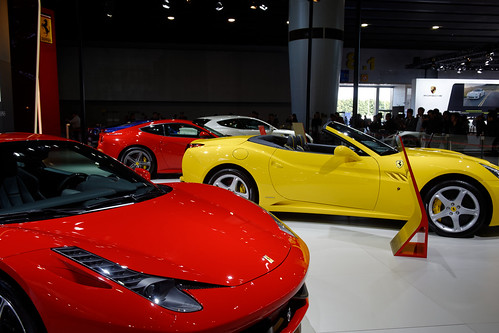Ferrari profits boosted by bespoke car sales
Ferrari #Ferrari

Unlock the Editor’s Digest for free
Roula Khalaf, Editor of the FT, selects her favourite stories in this weekly newsletter.
Sales of its first high-riding car and customers paying extra for bespoke paint jobs helped Ferrari to generate record profits last year, as it forecast earnings would rise in 2024.
The Italian luxury house posted a 34 per cent increase in net profits to €1.26bn on Thursday in preliminary results, with car sales up 3.3 per cent to 13,663. Revenues climbed 17 per cent to almost €6bn after the company began deliveries of the Purosangue, its first SUV-style model last year.
More than €460mn of Ferrari’s increased profits came from selling higher-priced cars, better sales in the Americas and China, as well as a rise in personalised features such as coloured brake calipers or bespoke paint jobs.
Ferrari is now expecting annual adjusted earnings before interest, taxes, depreciation and amortisation of at least €2.45bn for its current financial year, up from €2.28bn in 2023, although it warned that cost inflation would “persist”.
The group will also make less money from Formula 1 racing because of its poor finishing position last year, although it expected that to be offset by “strong personalisations” from customers paying for bespoke features.
Personalised features, where customers pay sometimes tens of thousands of pounds on top of the price of their car, have been a big driver of profits for the business in the past year, leading it to upgrade forecasts every three months in the year to November. Ferrari’s average selling price last year climbed to €397,000, a new record.
Sales were also driven by the 296 sports car, the latest iteration of the SF90 supercar, and the convertible version of the Roma grand tourer.
“The record 2023 results, the ambitions that we have on 2024, together with the exceptional visibility on our order book allow us to look at the high-end of 2026 targets with stronger confidence,” said chief executive Benedetto Vigna.
About 44 per cent of cars sold last year featured hybrid engines, which Ferrari uses to increase the power and performance of its cars, rather than primarily to reduce emissions.
The company has promised to release its first all-electric car next year, but will continue to produce engine-only models, as well as hybrids, for the foreseeable future.
Ferrari has given little detail about the electric model, leading industry figures to speculate it could be a high-riding version like the Purosangue, rather than one of the business’s classic sleek sports cars. Ferrari has said it plans to make the battery units for the car itself.
Vigna told a Financial Times conference last year that the model would be a “true Ferrari” and would produce its own noise, rather than using artificial sounds to replicate the engine tones beloved by its owners.
Shares, which have risen almost 50 per cent in the past year, climbed 5 per cent.